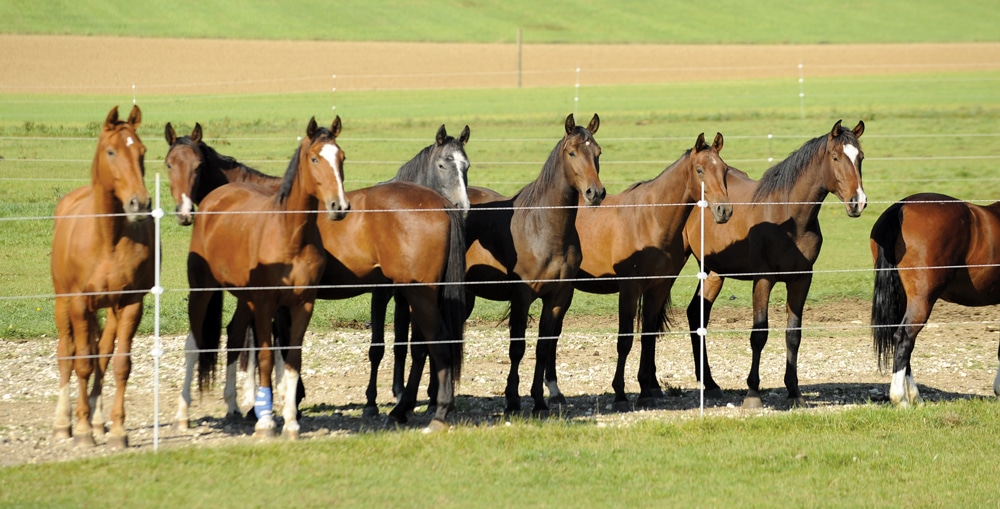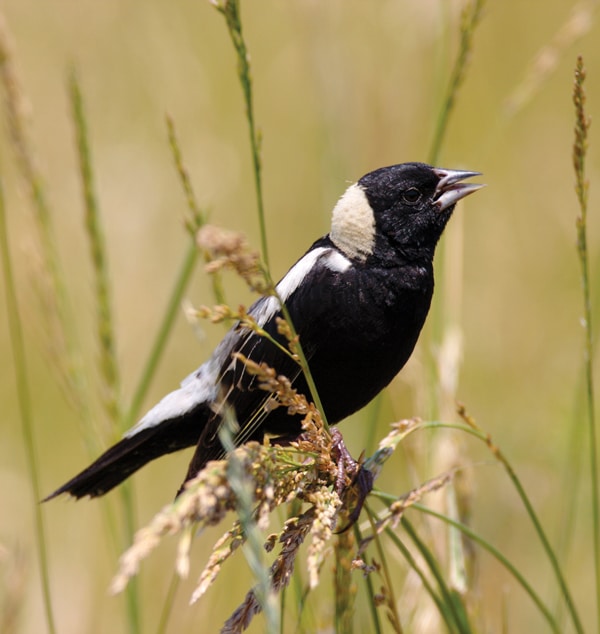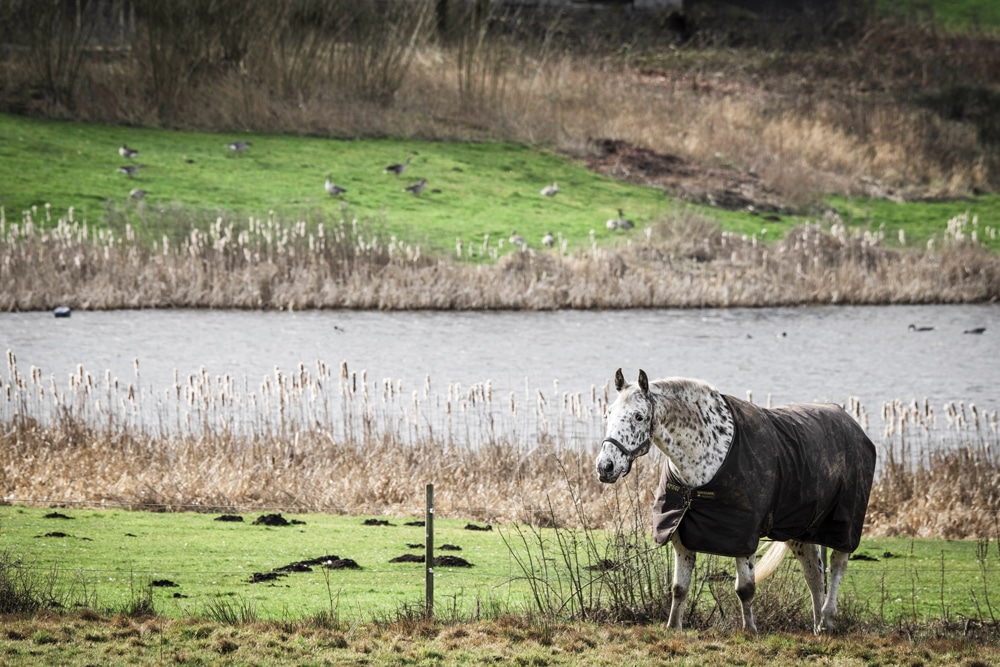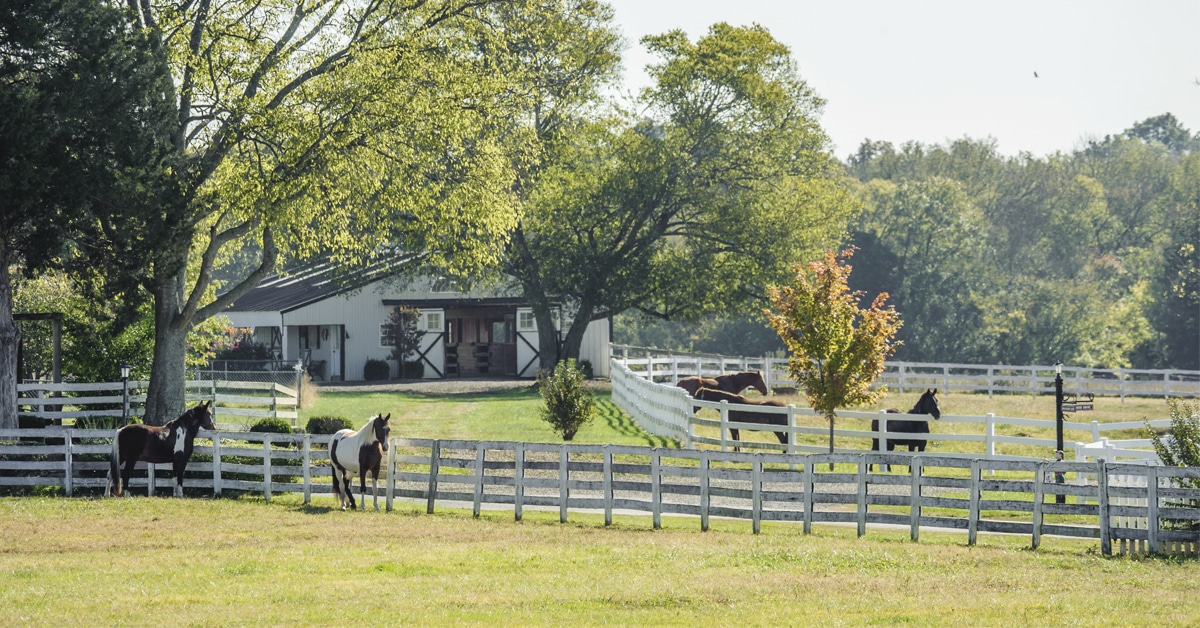For many horse owners, riding and nature go hand in hand. Trotting through verdant meadows or meandering along leafy forest trails can be the best part of horse ownership. If you keep your horses at home on your own land, considerations of how to maintain the terrain to meet the horses’ needs while still protecting the natural landscape may be confusing. Where do you start?
According to Edward Bork, professor in the Faculty of Agricultural, Life and Environmental Sciences at the University of Alberta, many horse owners focus so intently on their animals that they neglect the needs of the environment underneath those hooves. While you may consider the soil and vegetation solely as a means to grow pasture, it’s important to look further, ensuring soil health and plant diversity for their own sake.
Forgetting an ecological perspective when planning your land use may undermine the long-term health of your farm and of your horses. Seeing your pasture as an ecosystem of which your horses are an integral part, however, will secure the viability of your grasslands and your horse’s health for years to come.
A Thriving Pasture
Management is essential when looking to meet equine nutritional requirements with pasture forage alone, at least during the growing season. Equine Guelph in Ontario recommends allocating two to three acres per horse. This may present a challenge to property owners with small acreages, but rotational grazing alleviates pressure on small landholds. “Rotate, rotate, rotate!” exclaims Bork.
Christine O’Reilly, forage and grazing specialist for the Ontario Ministry of Agriculture, Food and Rural Affairs, agrees. “To keep pasture plants healthy and productive, horses should have access to a pasture for no more than five days at a time,” she advises. “Having multiple paddocks allows the horses to spend most days grazing, moving paddock to paddock as each one runs out of grass.”

To keep plants healthy and productive, horses should not have access to pasture for more than five days in a row. A rotational grazing system, where horses move from paddock to paddock, is perfect from an ecological standpoint. Temporary fencing is a boon as it can be reconfigured as necessary. (Robert Kraft – stock.adobe.com
Horses are selective grazers and they can put immense pressure on one part of the pasture while leaving the plants elsewhere alone completely. This focused attention on the same small areas compromises plant health, according to Bork. It results in bare soil, erosion and the introduction of unpalatable weed species. By regularly changing where your horses graze, you allow the plants a rest period to recover. The vegetation in your pastures will then rebuild their roots and leaf area, allowing them to capture water more efficiently and grow more quickly and productively. Rotation also reduces parasite loads on the land.

PEI conservationist Jackie Waddell won’t let her horses pasture where Bobolinks nest and delays haying until after the young have grown. (David Watkins – stock.adobe.com)
Healthy plants will keep your horses fed. They will also support a more diverse grassland plant community on your land. The more plant species you foster, the healthier your soil will be and the more wildlife will thrive and keep pests in check. Healthy grassland roots will aerate the soil, capture water and carbon, and shelter pollinators, birds, small mammals and beneficial insects.
Jackie Waddell, a horse owner and conservationist on Prince Edward Island, implores property owners to be mindful of species at risk that utilize grazing habitats. She keeps her horses away from pastures where small songbirds called bobolinks nest and delays haying pasture until after the young are grown.
Grazing horses can be an important part of stewarding the land by keeping certain plants under control and allowing others to flourish, encourages Bork.
What you can do:
• Break up your pastures into four or five paddocks.
• Move horses after five days, or when grass is five- to eight-centimetres high
• Keep weeds down by mowing before they flower.
• Delay turning out your horses as long as possible in spring to ensure pasture plants get a good start.
• Feed supplemental hay, if needed, to protect overgrazing.
• Spread manure in fall, naturally fertilizing the pastures over winter.

You should be familiar with how water runs across your land, particularly through pastures. Keep horses away from bodies of water, as their presence can cause several detrimental ecological effects. (Polarpx – stock.adobe.com)
Protecting Water
Whether or not you have a pond or stream on your land, you may still have an impact on water quality.
Bacteria and nutrients can contaminate surface runoff passing through your paddocks or other areas where manure is present. Familiarizing yourself with how water flows across your land allows you to make decisions about its protection. For instance, you’ll be better able to ensure manure piles are kept away from areas where water pools, identify muddy areas and find erosion on your pastures. In addition to being an important environmental practice, this can keep human water sources protected and safe.
If your property does contain bodies of water, it’s crucial to keep horses out of them. Their hard hooves damage the sensitive banks, trampling vegetation and increasing soil erosion. Their manure can contaminate the water and they can have a harmful impact on wildlife habitat.
The lands immediately surrounding waterways are riparian zones. These important habitats are home to an impressive number of species. They also reduce soil and wind erosion into waterways, filter sediments and pollutants in runoff, provide shade and reduce drought effects by holding and slowly releasing water in drier months.
What you can do:
• Fence your horses out of sensitive riparian areas and waterways.
• Provide water, salt and alternative feed elsewhere on your farm.
• Regularly remove manure from your pastures and never store it where water pools or where it can leach into wetlands.
Into the Woods
Trees provide windbreaks in the winter, shade in the summer and can even offer alternative forage for your horse. Livestock owners are increasingly recognizing the advantages of maintaining treed areas on their properties. While O’Reilly notes that silvopasturing, or the practice of integrating trees into grazing and agricultural landscapes, is in its infancy on horse farms, it does provide exciting opportunities for ecologically minded horse owners.
Waddell recommends that it’s best to keep horses separate from sensitive forest habitats and a simple fence will keep the woodland safe. Bork underlines that grazing horses in the forest must be done carefully – both for the well-being of your horses and the woods.
“You’ve got to baby the forest and limit grazing,” he says, noting that a forested area can also be a part of a rotational grazing system. Forests are composed of a variety of layers of trees, shrubs and ground plants that can be sensitive to too much grazing.
A good rule of thumb is to quadruple the forested paddock size for rotation to accommodate for the fragile vegetation but if you have limited acreage, carefully assess the food value of your forest and weigh that benefit against the possible damage incurred by your horses. Both Waddell and Bork also caution that forests contain toxic plants that can pose a threat to equine health.
If your property doesn’t already have many trees, it’s not too late. Planting hedgerows or shelterbelts around the periphery of your property is the easiest way to make room for forests while allowing for ample forage. Keeping them on the outside of fenced areas will protect young saplings. For the best result, choose several safe species that are native to your area and grow quickly.
“Over time, your shelterbelt will provide habitat, protection, carbon storage and water filtration,” promises Bork. “Every single tree you plant will make a difference!”
What you can do:
• Contact your local department of forestry to find out about the best species to plant on your property.
• Allow for hedgerows and only use wooded paddocks carefully in your rotational plan.
• Take care to keep horses out of the forest where possible, especially in spring when plants are the most vulnerable.
Prioritizing the integrity of the habitats upon which our horses graze will benefit our goals as owners and keep our landscapes healthy. Shares Waddell, “It’s something I consider every day and always have. It’s second nature to me.”
Fight Climate Change Right Under Your Horse’s Hooves
Promoting plant health and species diversity on your farm can be your contribution to the fight against climate change.
Every tree you plant on your property will use carbon dioxide as its main building material and can absorb on average 21 kilograms of CO2 each year. This amount can accumulate impressively over its lifetime!
A healthy grassland pasture also acts as a sink for an enormous quantity of atmospheric carbon, turning CO2 into an extensive underground root network and the leaves that your horse eats.
Healthy pasture ecosystems are home to methanotrophs, soil bacteria that “eat” methane, a powerful greenhouse gas. If the soil under your pasture is cared for, it won’t just be plants absorbing carbon, but an entire army of microscopic climate savers working away under your horse’s hooves.

